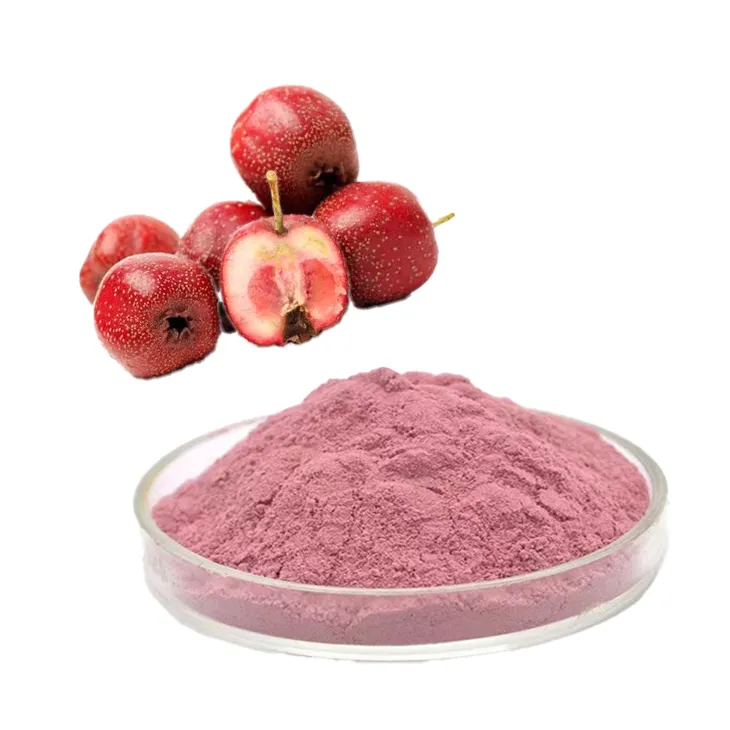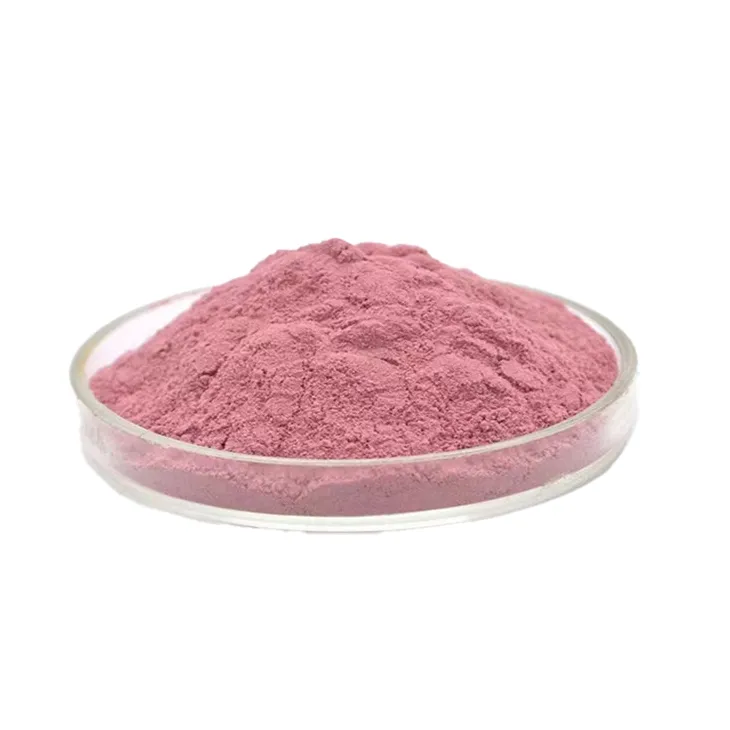- 0086-571-85302990
- sales@greenskybio.com
The Best Source of Natural Hawthorn Powder.
2024-11-28

Introduction
Natural Hawthorn powder has been gaining increasing popularity in recent years due to its numerous health benefits and culinary uses. It is rich in nutrients, antioxidants, and bioactive compounds that can contribute to better heart health, digestion, and overall well - being. However, not all Hawthorn powders are created equal, and the source of the hawthorn plays a crucial role in determining its quality. In this article, we will explore the best sources of natural Hawthorn powder from various aspects, including native hawthorn species, sustainable harvesting, and the influence of environmental factors such as soil and climate.

Native Hawthorn Species
Crataegus oxyacantha
One of the most well - known hawthorn species used for making powder is Crataegus oxyacantha, also known as the common hawthorn. This species is native to Europe, Asia, and North Africa. It has been used in traditional medicine for centuries to treat heart problems, digestive disorders, and high blood pressure. The berries of Crataegus oxyacantha are rich in flavonoids, such as Quercetin and rutin, which are powerful antioxidants. When processed into powder, it can be easily incorporated into various foods and supplements.
Crataegus pinnatifida
Crataegus pinnatifida, native to China, Korea, and Japan, is another important source of hawthorn powder. In traditional Chinese medicine, it is often used to improve digestion and promote blood circulation. The fruits of this species are larger compared to some other hawthorn species and have a unique flavor. They contain high levels of organic acids, vitamins, and minerals. The powder made from Crataegus pinnatifida can be used in making herbal teas, jams, and as an ingredient in traditional Chinese medicine prescriptions.
Crataegus monogyna
Crataegus monogyna is a hawthorn species native to Europe. It is highly valued for its medicinal properties, especially in relation to heart health. The berries are small but packed with beneficial compounds. This species is often found in hedgerows and woodland edges. When made into powder, it can be used in dietary supplements targeted at maintaining a healthy heart. It also has a role in the culinary world, adding a tangy flavor to certain dishes.

Sustainable Harvesting Practices
Sustainable harvesting is essential to ensure the long - term availability of high - quality hawthorn powder. Wild Harvesting
- When hawthorn is wild - harvested, it is crucial to follow ethical and sustainable guidelines. Harvesters should only take a certain percentage of the available berries to allow the plants to reproduce and maintain healthy populations. For example, in some regions, it is recommended to leave at least 50% of the berries on the plant.
- Wild - harvested hawthorn should also be sourced from areas that are not polluted or contaminated. This requires careful selection of harvesting locations, away from industrial areas, busy roads, or areas with heavy pesticide use.
Cultivation
- Cultivating hawthorn can be a more sustainable option in the long run. By growing hawthorn in orchards or gardens, farmers can control the quality of the plants and ensure proper harvesting techniques. Organic cultivation methods are preferred, as they avoid the use of synthetic pesticides and fertilizers that could potentially contaminate the hawthorn berries.
- Proper pruning and maintenance of hawthorn trees in cultivation can also improve the yield and quality of the berries. Pruning helps to promote better air circulation and sunlight exposure, which are beneficial for the growth and development of the fruits.

The Influence of Soil and Climate
Soil
The type of soil in which hawthorn plants grow has a significant impact on the quality of the berries and, consequently, the powder. Well - Drained Soils
- Hawthorn prefers well - drained soils. Soils that are too wet can lead to root rot and other diseases, which can affect the health of the plant and the quality of the berries. Sandy loam or loamy soils are often ideal for hawthorn cultivation as they provide good drainage while also retaining some moisture.
Soil Nutrients
- The soil should be rich in nutrients such as nitrogen, phosphorus, and potassium. Nitrogen is important for leaf growth, phosphorus for root development and flower formation, and potassium for overall plant health and fruit quality. Organic matter in the soil, such as compost or well - rotted manure, can improve the nutrient content and soil structure.
Climate
Climate also plays a vital role in the growth and quality of hawthorn. Temperature
- Hawthorn is a hardy plant that can tolerate a wide range of temperatures. However, it generally prefers temperate climates. Extreme cold or heat can affect the flowering and fruiting of the plant. In regions with cold winters, hawthorn may enter a dormant period, which is normal. But if the winter is too severe, it can damage the plant. Similarly, extremely hot summers can cause stress to the plant and reduce the yield of berries.
Sunlight and Rainfall
- Full sun exposure is beneficial for hawthorn plants, as it helps in photosynthesis and the production of sugars in the berries. Adequate rainfall is also necessary. While hawthorn can tolerate some drought, consistent and sufficient moisture during the growing season is important for good berry development. In regions with irregular rainfall, irrigation may be required.

Conclusion
In conclusion, the best source of natural hawthorn powder is a combination of factors. Native hawthorn species such as Crataegus oxyacantha, Crataegus pinnatifida, and Crataegus monogyna offer different nutritional profiles and flavors. Sustainable harvesting practices, whether through wild harvesting with strict guidelines or cultivation, are necessary to protect the hawthorn resources. The influence of soil and climate cannot be ignored, as they directly affect the quality of the hawthorn berries. By considering all these aspects, consumers can ensure that they are getting high - quality natural hawthorn powder that can provide the maximum health benefits and culinary enjoyment.
FAQ:
What are the main native hawthorn species used for making hawthorn powder?
There are several native hawthorn species commonly used for hawthorn powder production. For example, Crataegus monogyna is one of the popular species. It is widely distributed in certain regions and has characteristics suitable for powder production. Another one is Crataegus laevigata, which also contains beneficial components for health and culinary uses. These species are often chosen due to their flavor, nutritional content, and availability in their native ecosystems.
How does sustainable harvesting affect the quality of natural hawthorn powder?
Sustainable harvesting is crucial for the quality of natural hawthorn powder. When hawthorn is harvested sustainably, it allows the plants to reach their optimal maturity. This means that the fruits are fully developed, containing the maximum amount of nutrients and active compounds. Unsustainable harvesting, such as over - picking, can lead to premature harvesting of fruits, which may result in lower quality powder as the fruits have not had enough time to develop fully. Moreover, sustainable harvesting also helps in maintaining the ecological balance, which in turn can have a positive impact on the long - term quality and availability of hawthorn for powder production.
What role does soil play in determining the quality of hawthorn powder?
The soil has a significant role in determining the quality of hawthorn powder. Different soil types can influence the nutrient uptake of hawthorn plants. For instance, well - drained, fertile soils rich in organic matter tend to produce hawthorn with better - quality fruits. These fruits are likely to have a higher content of vitamins, minerals, and bioactive compounds. In contrast, poor - quality soils may lead to hawthorn plants with stunted growth and fruits with lower nutritional value. The soil pH also matters. Hawthorn plants generally prefer slightly acidic to neutral soil pH, and when the pH is within the appropriate range, it can enhance the absorption of essential nutrients like potassium, calcium, and magnesium, which are important for the overall quality of the hawthorn powder.
How does climate impact the production of natural hawthorn powder?
Climate has a multi - faceted impact on the production of natural hawthorn powder. Temperature is a key factor. Hawthorn plants require a certain temperature range for optimal growth. Cold winters can help with dormancy, while warm summers are necessary for fruit development. If the temperature is too extreme, either too cold or too hot, it can affect the flowering, fruiting, and overall health of the plants. Rainfall also plays a role. Adequate and well - distributed rainfall is needed for proper growth. Insufficient rainfall may lead to water stress, resulting in smaller fruits and lower yields. On the other hand, excessive rainfall can cause diseases and affect the quality of the fruits. Additionally, sunlight exposure is important. Sufficient sunlight ensures proper photosynthesis, which is crucial for the production of sugars and other compounds in the fruits, ultimately influencing the quality of the hawthorn powder.
Where can one find the best natural hawthorn powder?
The best natural hawthorn powder can be sourced from regions where the hawthorn plants are grown in their native ecosystems with favorable soil and climate conditions. For example, some areas in Europe are known for high - quality hawthorn due to their suitable climate and fertile soils. In addition, areas where sustainable harvesting practices are followed are more likely to produce top - notch hawthorn powder. Organic farms that focus on maintaining the integrity of the hawthorn plants and their environment are also good sources. One can also look for products that are certified for quality and purity to ensure they are getting the best natural hawthorn powder.
Related literature
- The Influence of Native Ecosystems on Hawthorn Quality"
- "Sustainable Harvesting of Hawthorn: A Guide"
- "Soil Conditions and Hawthorn Powder Nutrition"
- "Climate - Dependent Hawthorn Production"
- ▶ Hesperidin
- ▶ citrus bioflavonoids
- ▶ plant extract
- ▶ lycopene
- ▶ Diosmin
- ▶ Grape seed extract
- ▶ Sea buckthorn Juice Powder
- ▶ Beetroot powder
- ▶ Hops Extract
- ▶ Artichoke Extract
- ▶ Reishi mushroom extract
- ▶ Astaxanthin
- ▶ Green Tea Extract
- ▶ Curcumin Extract
- ▶ Horse Chestnut Extract
- ▶ Other Problems
- ▶ Boswellia Serrata Extract
- ▶ Resveratrol Extract
- ▶ Marigold Extract
- ▶ Grape Leaf Extract
- ▶ blog3
- ▶ Aminolevulinic acid
- ▶ Cranberry Extract
- ▶ Red Yeast Rice
- ▶ Red Wine Extract
-
Red Wine Extract
2024-11-28
-
Kidney Bean Extract
2024-11-28
-
Marigold Extract
2024-11-28
-
Sophora Flavescens Root Extract
2024-11-28
-
Hawthorn powder
2024-11-28
-
Uridine-5'-monophosphate Disodium salt
2024-11-28
-
Bamboo Leaf extract
2024-11-28
-
Elderberry Extract
2024-11-28
-
Beetroot Powder
2024-11-28
-
Citrus Aurantium Extract
2024-11-28




















